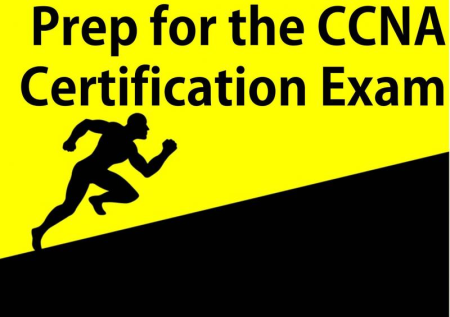
MP4 | Video: AVC 1018 x 572 | Audio: AAC 44 Khz 2ch | Duration: 14:20:21 | 2.54 GB
Genre: eLearning | Language: English
Prepare yourself for the CCNA (Cisco Certified Network Associate) associate-level Cisco Career information technology (IT) certification, with this indepth course from network expert Zanis Khan.
There are 32 topics within this CCNA Certification guide:. Obtain a foundation in computer networking in this first topic in the CCNA Certification course. Become equipped to explain the network and its key components of switches, routers, firewalls, and servers. Know the architectures and network topologies of Local Area Networks (LANs) and Wide Area Networks (WANs), and the important role of an ISP (Internet Service Provider). Understand the concepts of bits, bytes, kilobytes, megabytes, and terabytes. Learn about the factors (network speed, delay, and availability) that can impact network performance. Become equipped to explain the Open Systems Interconnection (OSI) model in this second topic in the CCNA Certification course. OSI is a conceptual model that standardizes the communication functions of a network without regard to its underlying internal structure and technology. Become familiar with the seven-layer architecture which includes the Physical, Data Link, Network, Transport, Session, Presentation, and Application layers. A more stripped down version is the TCP/IP model which includes the four levels of Network Interface, Internet, Transport, and Application. Learn the high-level responsibilities of each layer.. Become equipped to explain IP Address V4 in this third topic in the CCNA Certification course. IP Address V4 includes the IPV4 address, Subnet Mask, Gateway, and Router. Become equipped to explain subnetting in this fourth topic in the CCNA Certification course. Understand the networking concepts and architecture for breaking down a large network into smaller networks. Become equipped to explain supernetting in this fifth topic in the CCNA Certification course. Understand the networking concepts and architecture for combining multiple networks into a bigger network. Become equipped to explain networking devices in this sixth topic in the CCNA Certification course. Understand data transmission, switches, hubs, bridges, and packets. Connect CISCO devices in this seventh topic in the CCNA Certification course. Apply PuTTY Configuration settings. Become equipped to explain DHCP, TCP transmission (including the 3 way handshake), and common port numbers in this eighth topic in the CCNA Certification course.
Configuring a Switch. Configure a switch in this ninth topic in the CCNA Certification course. Know all of the components of switching. Follow along with Zanis in this hands-on session. Be able to explain switch modes (both access and trunk modes) and switch functions in this tenth topic in the CCNA Certification course.. Be able to explain the concept of a virtual local area network (VLAN), the reasons VLAN is needed, and how to configure a VLAN in this 11th topic in the CCNA Certification course. Understand the concepts of multiple collision domain, one broadcast domain, and one IP address. Practice some advanced concepts of a virtual local area network (VLAN) in this 12th topic in the CCNA Certification course. Become comfortable with Native VLAN, VLAN Trunking Protocol (VTP), and VLAN pruning. Configure a virtual local area network (VLAN) in this 13th topic in the CCNA Certification course. Create a VLAN, assign ports to a VLAN, and interact with the VLAN database. Become comfortable with switchport security in this 14th topic in the CCNA Certification course. Also troubleshoot slow connections. Be able to explain the concept of a router in this 15th topic in the CCNA Certification course. Understand router concepts and practice configuring a router.
Static Routing. Perform static routing in this 16th topic in the CCNA Certification course. Also continue working with the router configuration settings. Perform routing using the Route Information Protocol (RIP) in this 17th topic in the CCNA Certification course. Also know the difference between Ripv1 and Ripv2.
DOWNLOAD
uploadgig
https://uploadgig.com/file/download/f84eb1049775Fb0f/AMiRyrIC__The_Defini.part1.rar
https://uploadgig.com/file/download/Db5ffE6551d30519/AMiRyrIC__The_Defini.part2.rar
https://uploadgig.com/file/download/0c4818F5dC4da843/AMiRyrIC__The_Defini.part3.rar
rapidgator
https://rapidgator.net/file/5a581981fe4cf0979463d889843969ff/AMiRyrIC__The_Defini.part1.rar
https://rapidgator.net/file/1011b0e977a86eed021e91f270ee66b4/AMiRyrIC__The_Defini.part2.rar
https://rapidgator.net/file/69f9ef3406a9cb1e74b4cd99df462f8b/AMiRyrIC__The_Defini.part3.rar
nitroflare
http://nitroflare.com/view/070CF497A6D85C7/AMiRyrIC__The_Defini.part1.rar
http://nitroflare.com/view/B0DC6385A395F0A/AMiRyrIC__The_Defini.part2.rar
http://nitroflare.com/view/16A32A40A975E02/AMiRyrIC__The_Defini.part3.rar

